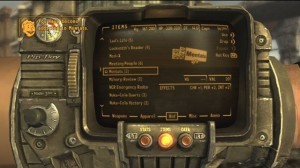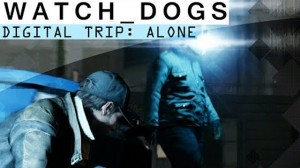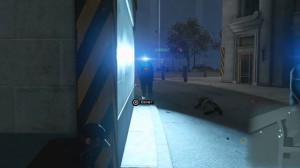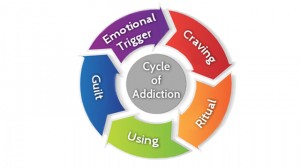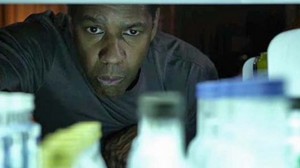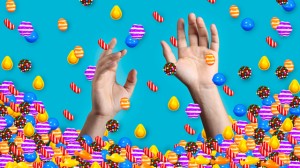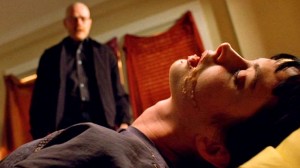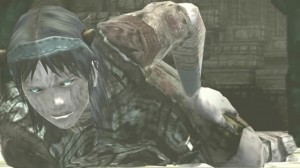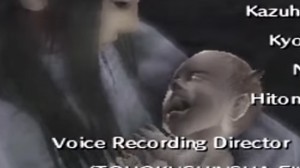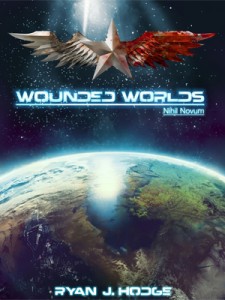-Ryan J. Hodge
For someone who enjoys a great story, is there anything better than a narrative that engages you from the very start? Imagine a world so rich you can almost smell the scents in the air, a delivery so clever it forces you to think in a way you never thought you would. I’m Ryan J. Hodge, author, and I’d like to talk to you about…Video Games.
Yes, Video Games. Those series of ‘bloops’ and blinking lights that –at least a while ago- society had seemed to convince itself had no redeeming qualities whatsoever. In this article series, I’m going to discuss how Donkey Kong, Grand Theft Auto, Call of Duty and even Candy Crush can change the way we tell stories forever.
What Video Games Teach Us About Writing For Addiction
First things first: This article is not about video game addiction; it regards what we can learn about addiction from video games. Okay? Okay.
Video games, in general, tend to handle substance abuse rather poorly. “Drugs” (such as they are) will usually have some sort of status bonus in the short term, with a lingering status hit in the long term in what is supposed to be a simulation of “High” and “Withdrawal”.
In real life, however, there’s no handy pop-up alert to inform you when that alcohol you imbibe “only socially” has actually become a problem.
Addiction cannot be adequately simulated with a status effect or a woozy camera; it’s something that gnaws at you constantly. It’s all-consuming, almost impossible to ignore unless you’re actively gratifying it.
So if video games are doing such a bad job, why am I bringing them up as an example of addiction done right? The answer may surprise you.
I found myself playing Watch_Dogs not too long ago when I stumbled on a feature I had ignored previously. The game itself contains discrete mini-games called ‘digital trips’ which allows you to forgo regular gameplay for the sake of these mini-games. One of the most affecting was called “Alone” and it’s what inspired this month’s issue.
“Alone” puts the player character in an abandoned Chicago… abandoned but for the angry, wandering robots that it.
The idea of the mini-game is to stealthily scrape around the ‘dark’ parts of the city to activate a ‘light generator’. Each generator you activate clears a new part of the city; however the only way to progress is to venture into the dark parts where your cybernetic adversaries lie in wait.
I found the dark city to be equal parts exhausting and nerve wracking. The robots teleport into the city in an unpredictable fashion. Whenever I thought I was being clever by utilizing back alleys and elevation, one or two would inevitably be found in my path. While I was able to pick up some tools to keep them at bay, there was never a moment that I felt that I had utter control of the situation.
So what does this have to do with addiction? Well the fascinating part about the mini-game is its cyclical conveyance. The objective (the “high”, if you will) was activating the light generators. Once activated, your character is safe and the robots can no longer menace you (your troubles “melt away” as it were). Yet the only was to continue is to go back into the dark; where your path to the next high is beset by all forms of adversity (the sort of adversity that will find you no matter how clever you think you are).
Drawing any connections yet? While the first time you activate a light generator may be exciting, that elation will quickly fade. Post-high, the light city is safe but unfulfilling. There’s nothing to do; life seems…empty. And so you seek the high again; you go back into the dark. It’s dangerous and arguably self-destructive, and each subsequent generator activated is less rewarding than the one previous. Before long, there’s no real excitement to finding the generators; it’s rote. It’s the only way to break up the oppressiveness of the ‘dark city’ and the monotony of the ‘light city’.
This is the textbook example of the addiction cycle.
“Wait!” You say, “If guilt is an element of the addition cycle, then where is this element in the mini-game?” Well, here’s where “Alone” shows a little more savvy than the average disposable mini-game. As your character is being hunted by the robots, you will hear them curse Aiden (your character) with every metaphorical breath. “He did this to us!” They’ll cry. “This is his fault. He is to blame!” So if the robots are Aidens fault, and activating the light generators kills them, isn’t the only fair thing to actually allow them to catch him and exact their revenge?
An example of the Addiction Cycle rendered in excruciating detail is the 2012 film Flight. In this drama, Denzel Washington’s character, Whip Whittaker, is a substance abuser who just so happens to keep an airliner from cataclysmic obliteration during a technical failure. While there’s an hour of screen time between the crash and NTSB hearing, the most interesting part of the movie occurs on the night before the hearing.
All Whittaker has to do is remain sober until the end of the hearing, but an unsecured hotel room with a fully stocked mini fridge proves too tempting an offer.
What’s salient to the topic at hand is this character’s pursuit of gratification despite the risks; even despite the fact that he merely need endure going without for just mere hours. In a sense, it’s as if he wants to get caught; that it’s the only way he can bring himself to atone.
Now some might wonder if games like Candy Crush will have a place in this discussion and, indeed, King.com’s world renowned money printer absolutely does.
While what players of Candy Crush go through is technically ‘conditioning’ rather than proper ‘addiction’, the distinction can be blurred at times. Rather than allowing players to get their fill of the game until they reach a natural stopping point; Candy Crush’s model does not have a ‘save and quit’ option. Instead, it limits play until certain conditions are met.
Unintuitive as this may seem, this leads to players actually playing the game more than they usually would as they are required to change their behavior patterns to satisfy the game (as opposed to the game attempting to satisfy the player).
Such compulsions were well documented by Dr. B. F. Skinner and his experiments with the Operant Conditioning Chamber. While it may be difficult to imagine one’s actual life being controlled by when your Candy Crush lives refill, it is easy to see how certain principles are transferrable to addiction.
This compulsion to consume, however, can often be exacerbated by the people around an addict; whether they be enablers or active participants. In Season 2 of Breaking Bad (2008, TV Show) we meet Jane; a romantic foil to the otherwise unstable co-protagonist Jesse. When Jane, a recovering addict, falls in with Jesse; it is not that they are unaware of the dangers posed by their drug addiction.
In fact, in the wake of their plans to leave the country to live abroad; they agree to ‘just one more dose’ before going clean. While this ‘last’ dose actually kills Jane, we recognize that the very idea that this could have been the last is patently ridiculous. Substance abuse was a foundational pillar of Jesse and Jane’s relationship, and if even one were to relapse; they would surely drag the other with.
We can see similar themes echoed in Team Ico’s Shadow of the Colossus (2005). In SotC, our protagonist must slay 16 monstrous colossi in order to revive the corpse of his beloved. However, with each colossus slain, a dark force slowly begins to influence the body of the hero.
The interesting thing about this is that our hero is not as ‘addicted’ to slaying colossi as he is addicted to his beloved Mono. Despite the ravages that it puts on his body, he does this all –ostensibly- for her sake. In any other tale, this would be a heroic deed; but as the hero’s horns grow longer, as entire armies rise to stop him; we must stop to ask “is she worth it?” If the only way to revive Mono is to unleash evil upon the world; surely the only winning move is to not play.
What we see is that addiction is not something that appears in lines of code, but expressed by the need to keep ‘playing’ even when it hurts. So game on! If you’re able to pull yourself away; who knows? It just might make you a better writer.
Ryan J. Hodge is a science fiction author and is a Games Industry veteran. His latest book, Wounded Worlds: Nihil Novum, is available now for eBook & Paperback.
You can now follow Ryan on Twitter @RJHodgeAuthor


